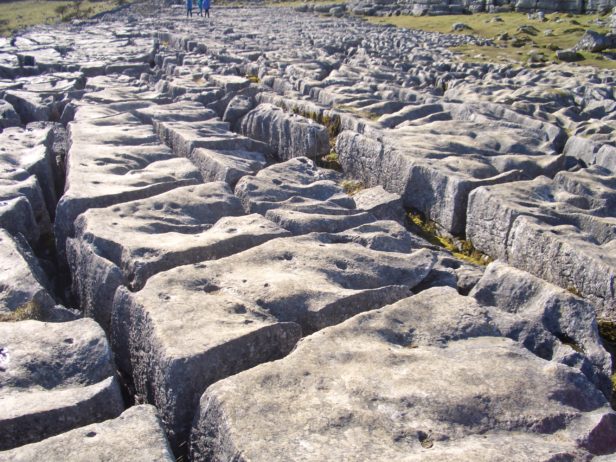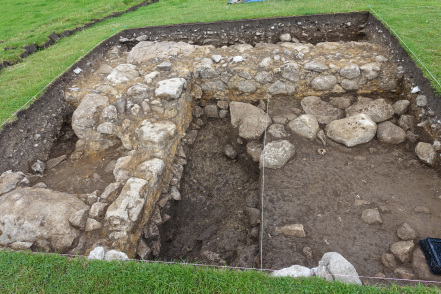Geology, Field Studies & Archeology in Malham

Malham is the subject of much research in geology, with Malham Tarn
Field Centre also being well known.
Limestone: this is the key to understanding much of what goes on at Malham and the Yorkshire Dales in general. The spectacular landscape created by the presence of limestone is known as KARST. Underground drainage is one of the main features of karst. Due to the chemical properties of limestone (calcium carbonate), rainwater readily dissolves the rock. Sinkholes mark the areas where the surface water disappears underground leaving valleys dry and stream less. As soils do not form easily on soluble limestone, bare rock, scree slopes (see photo above), crags and pavements are typical of such an area.
Malham Cove Information and images
Gordale Scar Information and images
Malham Tarn Information and images

Malham Chapel Dig St Helen’s Chapel in Malham was an ancient religious foundation mentioned in monastic charters as early as the twelfth century. In Malhamdale, like much of Craven with a monastic legacy, support for the religious reformations of Henry VIII and Edward IV was reluctant and slow. There had been widespread support in the region for the Pilgrimage of Grace in 1538. However, in 1549, despite being a chapel of ease, rather than a chantry chapel, St Helen’s Chapel was demolished and its contents and lead roof removed at the instigation of John Lambert of Calton and William Clapham of Beamsley, Chantry Commissioners for the West Riding; both were also landowners in Malhamdale.
Info from Craven & Pendle Geological Society.